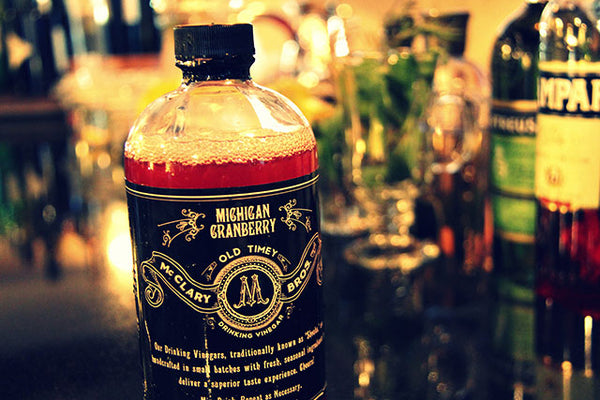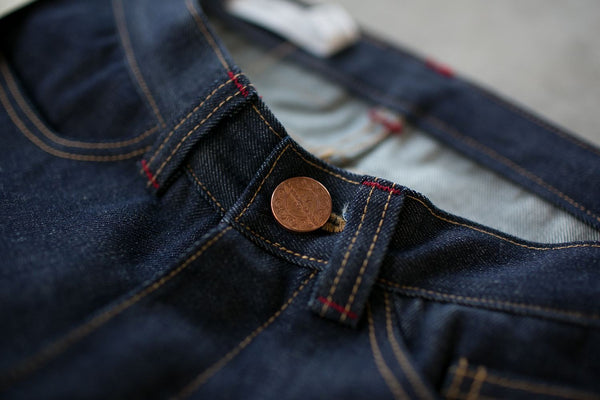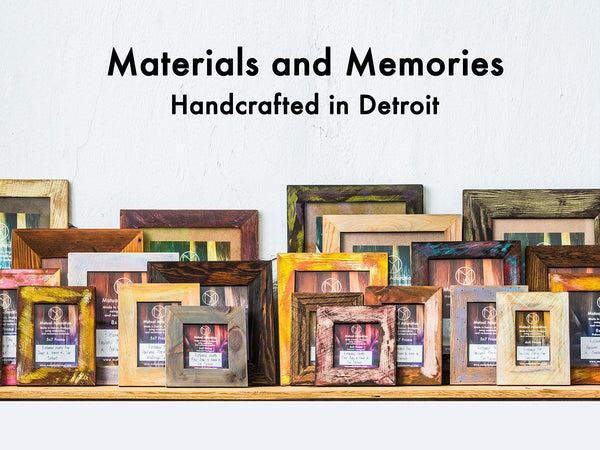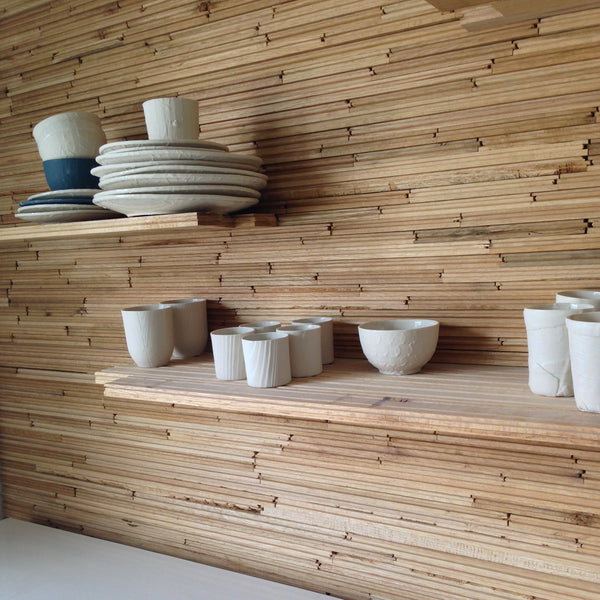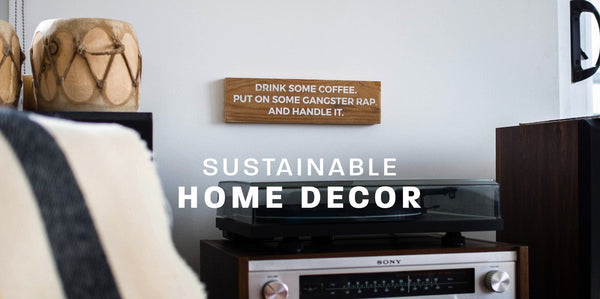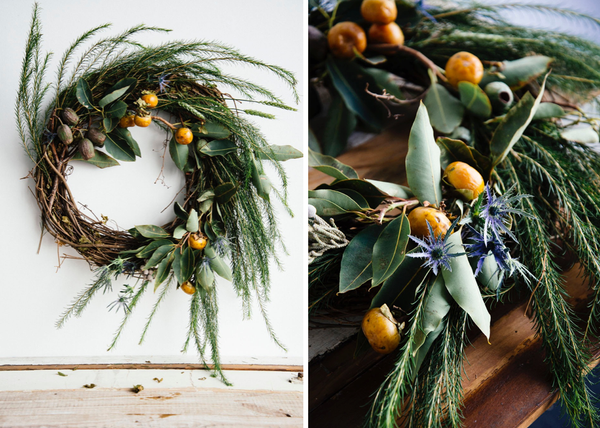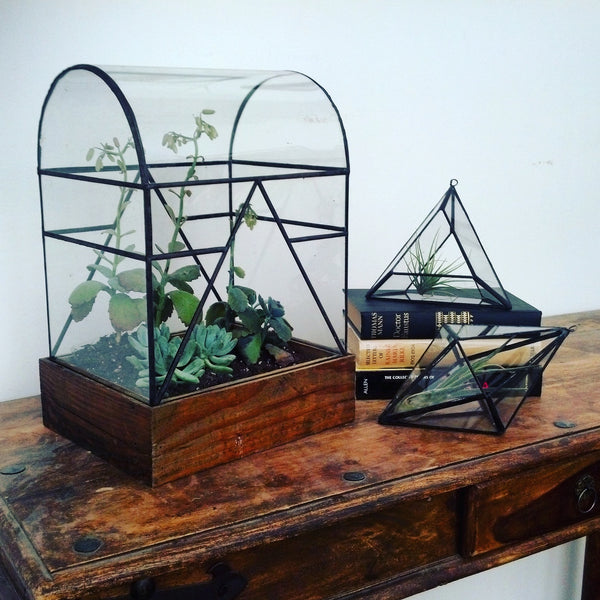The Ciseal Blog

Black Friday? Why We Should Be Supporting Green Friday Instead
This Black Friday, let's focus on helping the planet by making more intentional and sustainable choices.

Photo by Thirdman
Over-consumption is one of the most pressing challenges facing our planet today. Decades of data have made it clear that human behavior is directly linked to climate change. Acknowledging the climate emergency as the defining issue of our time, its up to each of us to take meaningful action. Fortunately, there are plenty of ways for each and every one of us to keep our consumption in-check.
This Black Friday, while countless companies battle to offer the lowest prices, I urge you to pause and reflect. If you choose to shop today, prioritize thoughtful, intentional purchases. Opt for high-quality, handcrafted products made to last, and support independent businesses whose values align with a sustainable future.
Our planet's resources are finite, and there's no "Planet B." This Black Friday, let's slow down, consume less, and make better choices for the environment.
Why Ciseal Doesn't Compete in the Black Friday Price Race
As a design-led, sustainability-focused brand, I believe in forging a different path. For me, it's not about being the cheapest - it's about doing what's right.
Every day, I craft products that defy throwaway culture and that stand the test of time. My designs are handcrafted with intention, combining timeless aesthetics with the highest standards of quality.
I refuse to compromise. No harsh chemicals, no shortcuts, and no dumpsters of wasteful offcuts - just innovation, passion, and a commitment to sustainability. Every choice I make is rooted in the belief that better decisions today can shape a better tomorrow.
This Black Friday, let's make a path for a more mindful, sustainable future together.

Photo by Tim Meyer on Unsplash
Ciseal Focuses Instead On...
QUALITY
Every detail matters. I pour tremendous thought and effort into perfecting every curve until it is just right. I'm continuously looking for opportunities to improve both quality and sustainablity - like by transitioning to using only sustainably-harvested hardwood veneer that's grown in the upper midwest for the core layers of every product. Creating tomorrow's heirlooms, I'm dedicated to crafting pieces that are made from durable materials so they can be cherished for a lifetime. True design excellence demands time, skill, and unwavering dedication - qualities that make Ciseal products timeless investments.
SUSTAINABILITY
My choices prioritize what's best for people, the planet, and my business. Guided by a passion for eco-conscious design, I work to ensure my processes and materials honor and protect the natural world - the very source of my inspiration. From the materials I work with to the products I package them in for shipping, sustainability isn't just a buzz word; it's the foundation of everything I do.
LEARN MORE ABOUT CISEAL'S CORE VALUES

Photo by Noah Buscher on Unsplash
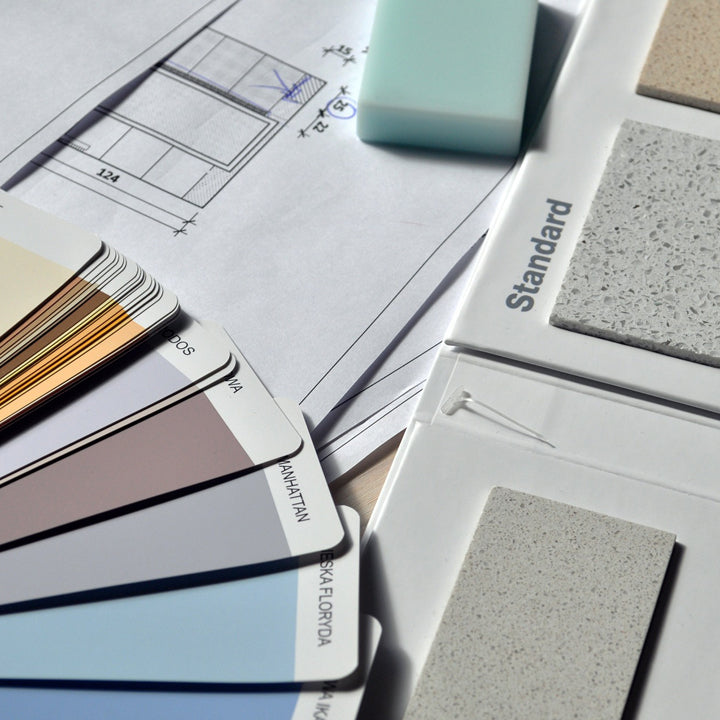
Fixer-Uppers for First Time Home Buyers
Photo credit by Pixabay
For first time homebuyers, the high cost of a mortgage can be daunting. If you’ve been out looking at properties, you may have realized that you cannot have your dream home in your ideal location.
But what if you could? You may be able to have the perfect home in the right location if you are willing to invest in a fixer-upper. Here’s what you need to know.
What You Will Need
Buying a home that is not picture perfect will save you money, but you must try to make a sound investment. You want to make sure that the house does not have structural damage that will end up costing you more than you saved.
Here are some questions you should ask yourself first:
- Do you have a strong relationship? According to this article from BobVila.com, renovations and home buying can put a strain on a relationship, especially a new marriage.
- Do you have any DIY skills? While it’s perfectly fine to contract all your work out, it might actually cost you more than you’ll save. Don’t invest in a fixer-upper unless you have both the skill and time to do the minor updates, like painting and landscaping.
- Do you have the right tools? A fixer-upper may come with some unforeseen “small” issues to fix, so you should have the right tools for each project, such as drills, sanders, jigsaws, etc.
Lifehacker has more advice on what to look out for when choosing your fixer-upper property.
Budgeting for Your Home
First-time homebuyers have plenty of planning before getting a mortgage. Start by learning your credit score to determine the range of your loan approval. Get an idea of your budget by totaling up all your income and assets. Then, deduct your monthly expenses. Now, consider how much upfront budget you have for down payment, closing costs, lawyers’ fees, and moving costs.
Remember, if your house is larger than where you now live, your monthly utility bills may be higher. You may have homeowner association fees, and you will have regular maintenance costs. If this sounds daunting, read this post from Trulia to make sure you are ready to buy a home.
Finally, it’s wise to get an idea of local home prices. Homes for sale in Troy, MI have a median listing price of $350,000. Consider how much extra you’ll need beyond your mortgage for updates and renovations.
Remember, you can’t add the cost of major renovations into a standard mortgage. You can only get a loan for your home’s worth. According to Interest.com, there are two programs available that may be able to help: Federal Housing Administration's 203(k) mortgage and Fannie Mae's HomeStyle Renovation mortgage. Each has different requirements, so read the article to discover if you qualify.
If you don’t have immediate repair needs and are shy on budget, you can save up for them as you go along. But beware: Older homes can have more problems. This writer at Apartment Therapy shares how the budget she saved from buying a fixer-upper went right back into basic repairs directly after moving in.
Tackling Repairs
Prioritize repair projects by what needs to be done to make the space livable and what can be done after you move in. For example, outdoor work and renovations in spare or duplicate rooms (like bathrooms) can be done while you are there.
Think about seasonal needs too. For example, if winter is approaching, make sure your home has working heat and adequately sealed doors and windows. Do major renovations and any structural work, such as roofing, before you move in if possible. Finally, design elements, like paint and details, should be done last.
Buying a fixer-upper for your first home can seem daunting. However, with proper planning and a realistic budget, you can build your dream home and save money along the way.
This article was written by Bret Engle from DIYguys.net. If you're interested in learning more about how to do your own home repairs and updates, be sure to check out their site. They have a wealth of knowledge in their blog. Thanks, Bret!

12 Interior Trends From Around the World
Every culture has its own preference when it comes to beauty, fashion, lifestyle and even interior design. But all cultures agree on one thing and that is having a cozy and comfortable living space is what brings us together. Homes now represent design themes from all over the world. Whether Asian, Mediterranean or Spanish; our homes are where different cultures can truly shine and bring all the design aspects together. Here we present 12 different interior trends from around the world that are present in each and every single house.
Japan
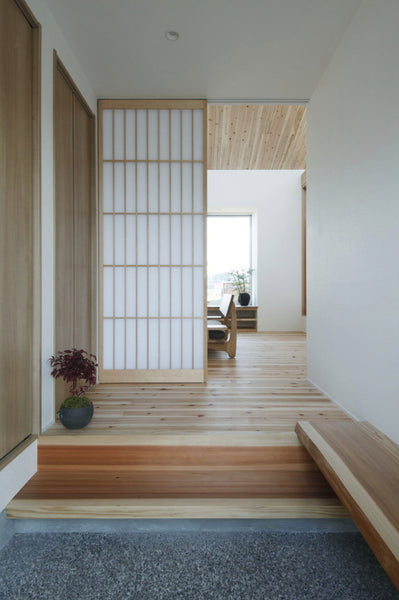
Interiors inspired by Japan always feature colorful painting, low furniture and wooden pieces are usually made with unfinished woods. Homeowners adopting Japanese interior style are the ones who use sliding panels instead of walls to divide their space. Potted plants and ceramic vases are used to decorate the house. This overall interior trend is known for its simplicity and symmetry.
India
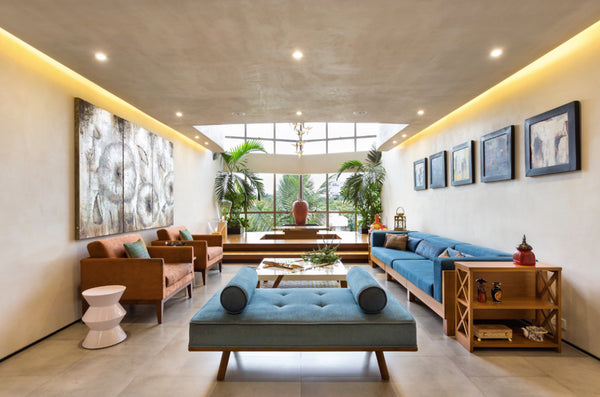
Indian styles homes use brightly colored textile for pillows, rugs, furniture, throws, towels, bed linens and furniture pieces. You would see houses adopting this style usually decorate with greenery in colorful pots and vases that sit on the floor as well as statuses. Dark wood is this style favorite where it is used to make furniture, frames, trays and mirrors.
Italy
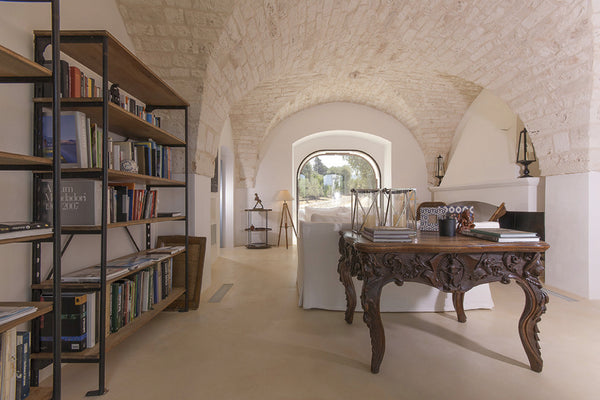
This is a grandeur style that usually features sculptures and graceful statues, often depicting children, musicians, and beautiful women. Furniture pieces would be decorated with exquisite carvings covered with gold or bronze. This trend also used luxurious linens such as (brocade, silk, velvet) and rich finishing.
Scotland
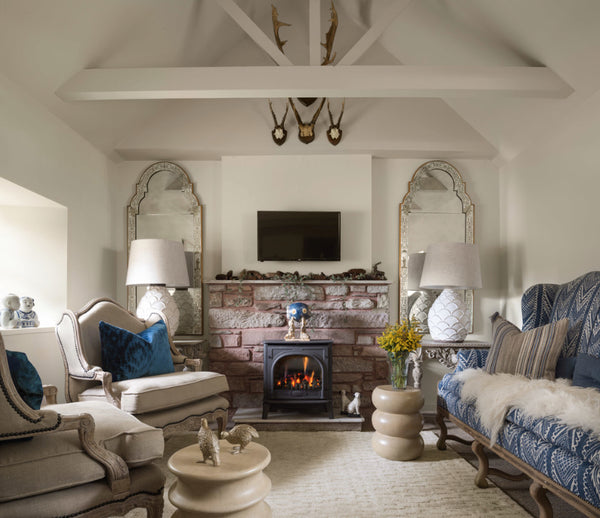
Patterned materials are often used for furniture pieces as well as dark leathers. Fireplaces are often present in houses with Scottish interior styles whether it's a real one or a painted fireplace on an accent wall. Homeowners looking to execute the Scottish way in interior design should opt for a well-lit room through the use of colorful fabrics, candles and fireplaces.
United States of America
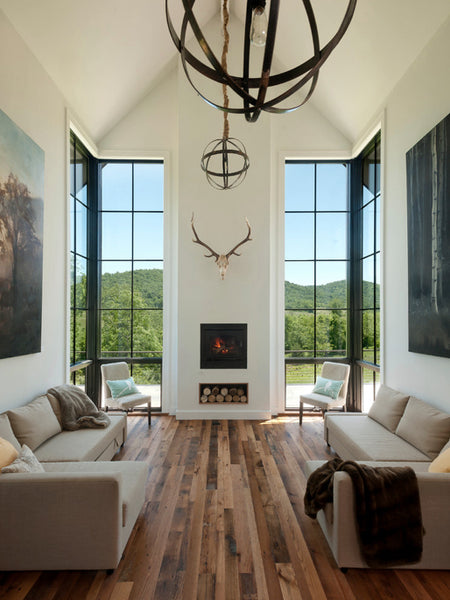
American houses are famous for their floor to ceiling windows that give panoramic views and allow more natural light inside the house. Such style fancy light-colored fabrics that radiates simplicity and elegance. Vases and jars are used to decorate the house, however, they mostly found filled with sand or stones rather than greenery. Throws and cushions are usually scattered all over the furniture pieces in an uncluttered yet appealing way.
United Kingdom
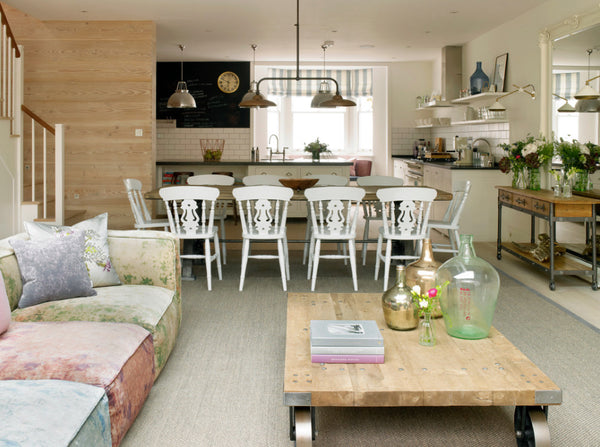
This style favors lamp, candle and fireplace light rather than its natural source. Houses with UK interior design feature built-in hardwood shelves for books, ornaments or platters...etc. Bold patterns are mostly used for furniture and curtains. The kitchen is the masterpiece and the family-sized dining area is where all the focus is.
France
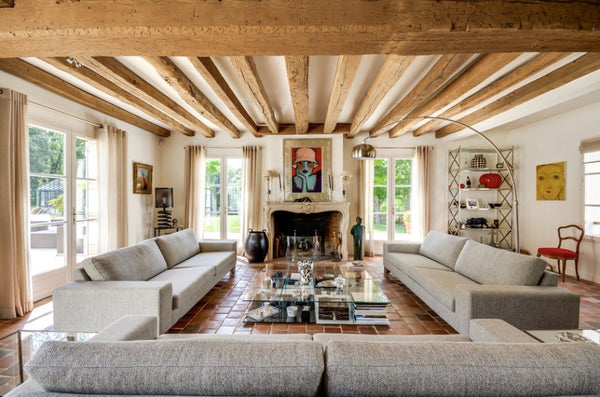
Candelabras and chandeliers are often used in this interior design trend for they add glamour and elegance to any space. Walls are decorated with large mirrors, tapestries and artworks. Baroque-style carvings inspired by the Romans are usually found on furniture and wall decor such as mirror frames. Often walls are painted with white or blue colors.
Mexico
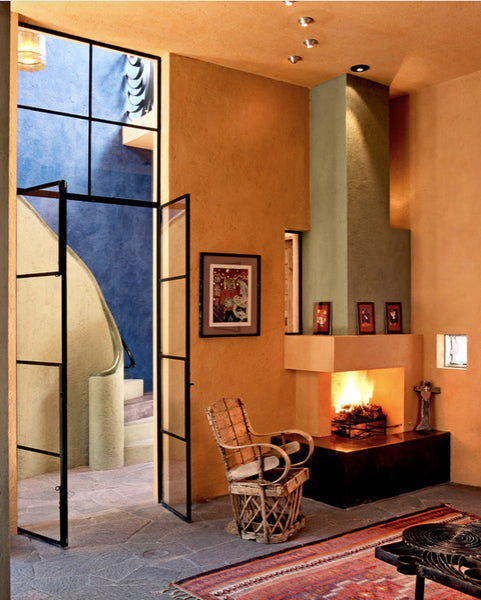
When in Mexico, colors are dominant whether on walls, furniture, rugs, throws and pillows. This style isn't afraid to use so much colors for colors are the secret to a happy home. Wooden furniture are also found carved and painted.
Morocco
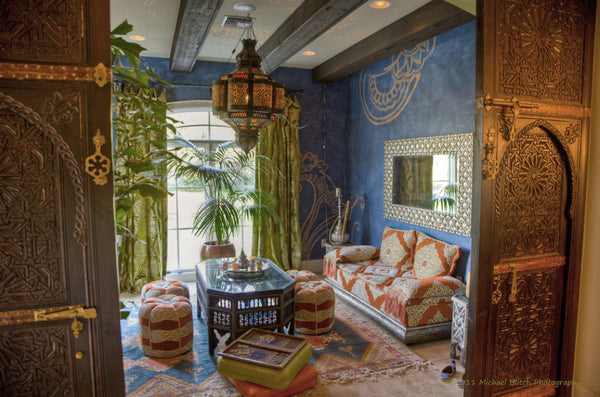
Moroccan style decor is into cool and calming palettes of sea, blues of sky or greys with plenty of neutral shades. This style is all about geometric patterned soft furnishings. Tile patterns combined with tactile textures are the way to go if you want to implement this style of decoration in your house.
Sweden
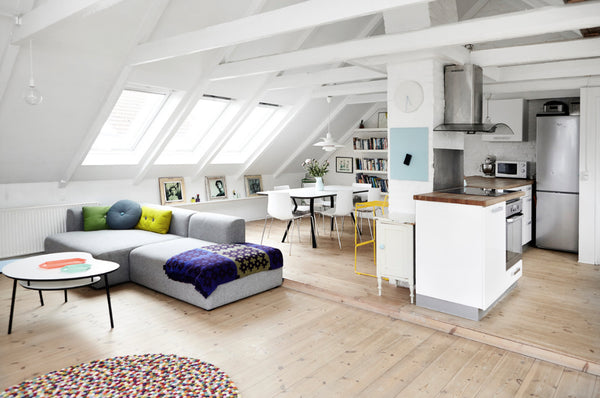
Swedish style decor is balanced simplicity where spaces are usually uncluttered. This style radiates simplicity in every corner from its soft furnishings and rugs to windows and shades that allows more natural light inside the house. What is even more fascinating about this style is that most spaces would be found highly-personalized where there are little to no distractions whether telephone, television or computers.
Egypt
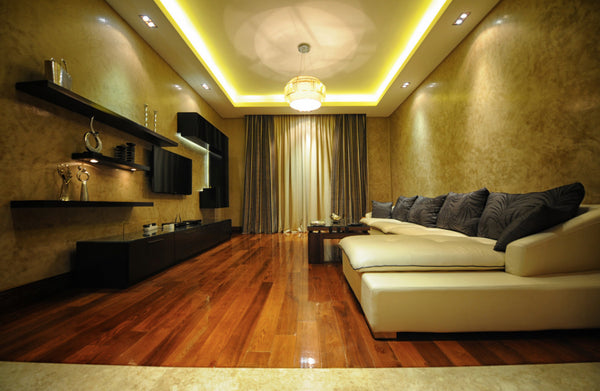
Egyptian style is known to be expressive and dramatic through the use of pieces that add an antique chic and elegant touch to any space. Egyptian interior style is rich with colors and a style that love to mix between black, gold and yellow. Egyptian statuses will also add to your house's entire style. All shades of yellow color, from desert sand shades to golden-yellow color tones, are excellent for creating Egyptian interior in any space.
China
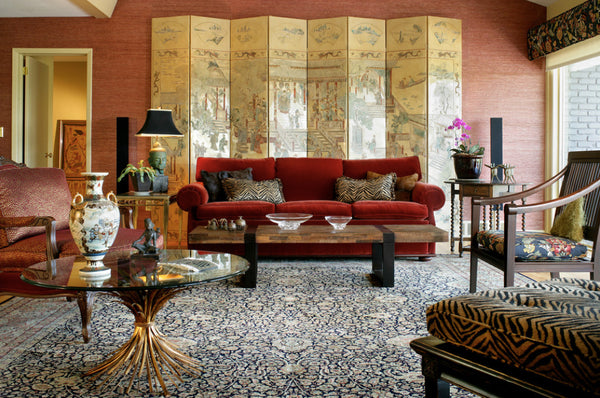
Chinese style has a way in evoking an image of serenity and tranquil calm. This style is usually accompanied with colors like pinks of cherry blossoms, ravishing reds and luxurious purples. And for a more traditional Chinese look, use ornate rugs for they are perfect to complete the look you aspire for.
About the Author:
Jamie Moulton is a senior content curator at JustProperty.com, a leading real estate portal in the MENA region, headquartered in Dubai, UAE. Thanks, Jamie!
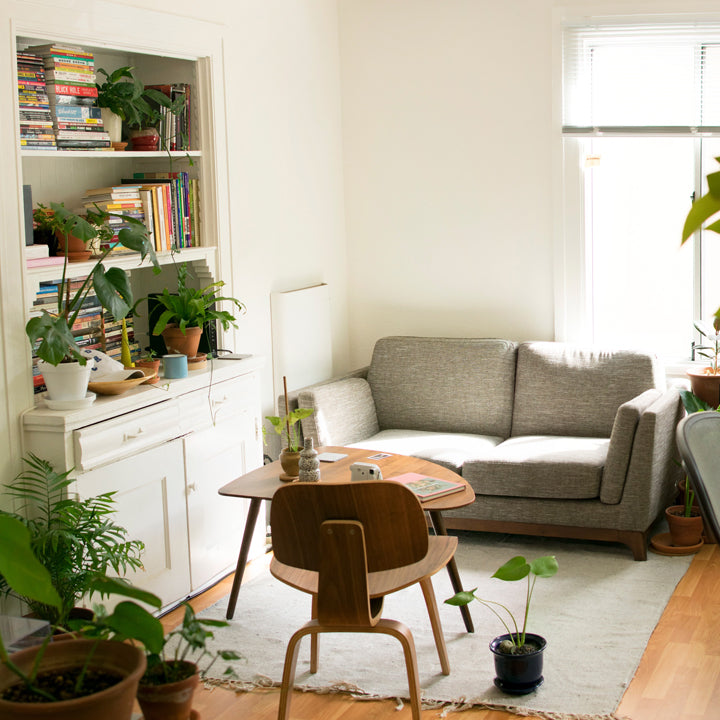
10 House Plants to Brighten Up Your Home this Winter
With winter in full swing here in Michigan, and that means more time indoors snuggling with the pups. In fact, we currently have about 12 inches on the ground here, and I feel like It’s going to be a while before we see any green leafy things outside. If you’re in the same boat, tide yourself over during these seemingly lifeless winter months with some house plants. They’re quiet, relatively inexpensive, require minimal maintenance, have been shown to reduce stress, and they even clean the air for you - I wish my dogs could do all that! Here are 10 of my favorite house plants for brightening up your home on a dreary day plus some tips for keeping them alive throughout the winter months and beyond.
Fiddle Leaf Fig

Perhaps possessing the most beautiful, lush leaves on this list, the Fiddle Leaf Fig is certainly a photogenic plant. It starts out as a bush, but can grow into a lush tree (a small one - don’t worry) if trained properly. Fiddle Leaf Figs enjoy bright indirect light, moderate amounts of water, and an occasional leaf dusting to keep it looking sharp. This is a relatively forgiving plant, so it’s great for beginner plant parents.
Spider Plant
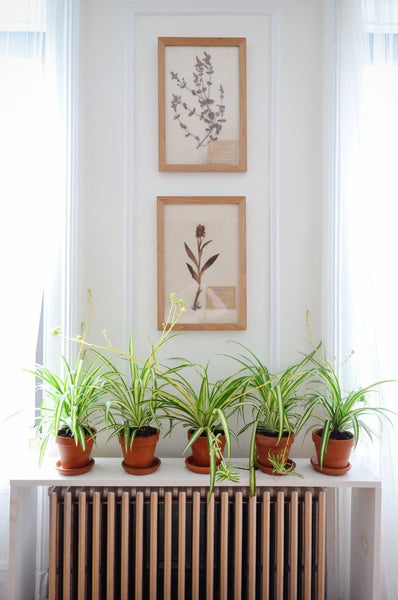
Spider plants are great air purifiers plus they’re super easy to take care of. It prefers bright indirect light, and moderate amounts of water. Watch the leaf tips - if they start to brown, then try watering with some collected rainwater (or melted snow) because they can be sensitive to the added fluoride in tap water. A pro tip for cat owners - the Spider Plant is non-toxic and harmless, but it is mildly hallucinogenic to cats.
Snake Plant
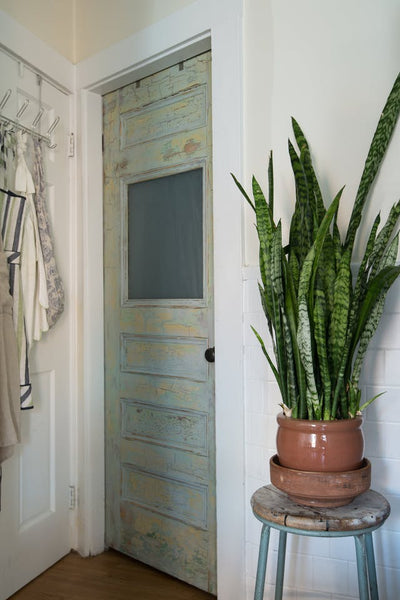
The Snake Plant has beautiful, tall leaves and it loves all kinds of light conditions - low, bright, indirect, fluorescent, all of the lights! It requires very little water, so it’s perfect for the forgetful plant owner. It is awesome at converting CO2 to O2, so if you’re in the market for an air purifying powerhouse, this is the plant for you.
English Ivy
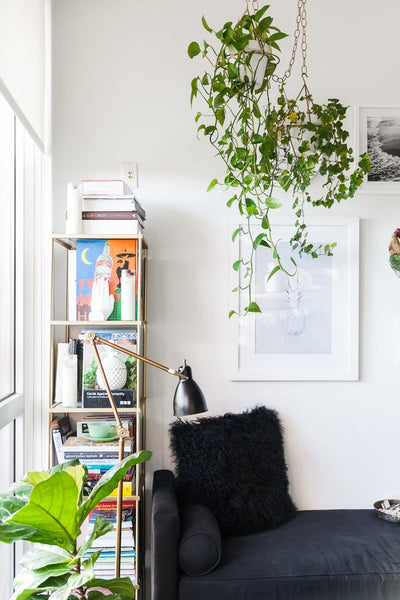
English Ivy has very distinctly shaped leaves that look lovely as they hang down from higher perches. It is a very forgiving plant which prefers drier soil, so make sure the top of the soil is dry before watering. It’s a fan of all kinds of light and won’t mind an occasional cold draft (how very English), which makes it one of our favorite winter pick-me-ups.
Peace Lily

The Peace Lily is a very popular house plant because of its gorgeous flowers, beautiful foliage, and superior air cleaning abilities. If you’re a fan of low maintenance and forgiveness, then the Peace Lily is the house plant for you. Peace Lilies will droop when they want water, so you never have to wonder if it’s thirsty or not. It loves the gamut of light qualities from low to bright, but is not a fan of direct light. Just keep your Lily away from windows and you’re golden.
Rubber Plant

Rubber Plants have big, green leaves that add a lush freshness to your winter home. Like most houseplants, Rubber Plants like moderate watering and bright indirect light. It’s a nice and easy plant to care for, and other than an occasional dusting of it’s leaves, it’s happy just to be inside brightening your home.
Weeping Fig

If you keep your home at about the same temperature all of the time, year-round, then the Weeping Fig is your best plant friend. This plant does not like change - don’t change the temperature too much, and don’t move it around your home and you’ve got a happy camper in the Weeping Fig. It likes bright indirect light and moderate water.
Bird of Paradise
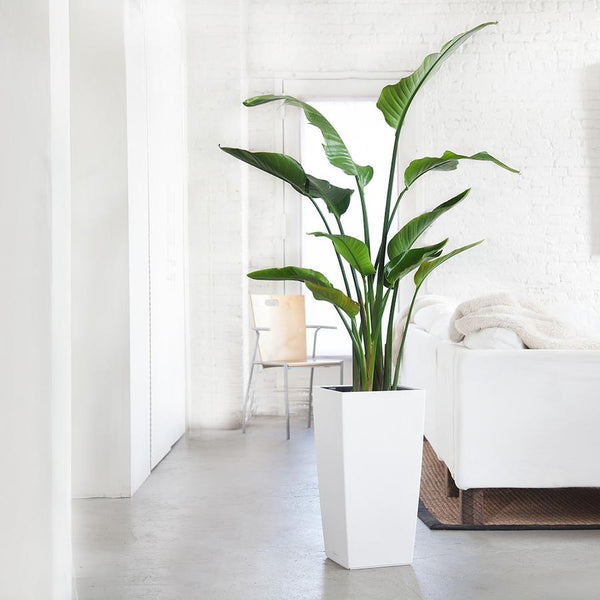
As far as flowering house plants go, the Bird of Paradise is one of the most beautiful. Year round, it rewards you with lush foliage, but it really puts on a show when it blooms. Bright light is what this plant lives for, so don’t hide it away in a corner. It goes somewhat dormant in winter, so it requires less water than in the summer months when it drinks up plenty of water. This plant can grow to over 5 feet tall in the right pot and conditions, so make sure you have the space or are prudent with trimming.
Boston Fern
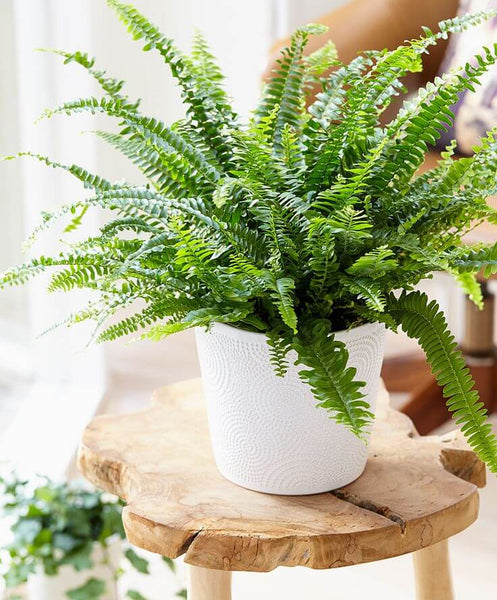
The Boston Fern loves a humid environment, but don’t let that deter your in the winter months. A bit of misting from a spray bottle will keep this plant happy through the drier months, and be sure to keep the soil moist. It will tell you it needs more humidity when it’s leaves begin to yellow. It grows best in bright, indirect light.
Jade Plant
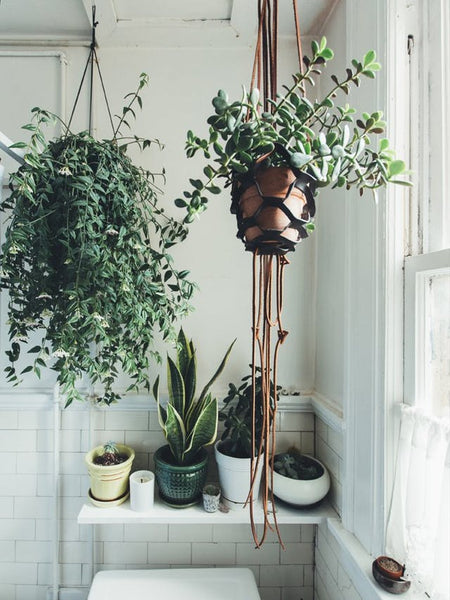
And for those of you who just can’t seem to keep anything green alive, the Jade Plant is for you. Jade Plants are succulents - meaning they thrive on very little water. They are dormant in the winter, so you can let their soil get pretty dry in between waterings. In the summer time it will require more water. Their leaves will let you know if they need more water - full, glossy leaves are happily watered. If the leaves start to spot or begin to fall off, then you need to water the plant a bit more. In spite of the little water they need, Jade Plants manage to grow as happy-looking, cheery house plants.
Now, a lot of house plants are moderately toxic to pets, so if you have furry friends you need to train them to stay away from the plants or keep the plants out of reach. For the more stubborn or slow-to-learn pets, stick to only non-toxic plants like the Boston Fern and Spider Plant.
As a general rule for most house plants, they like bright indirect light. Most of the plants on this list require moderate water which means watering 1-2 times per week depending on the plant, how much you water at one time, and the relative humidity in your home. I like to set a reminder on my phone for once every week to keep me on top of my plant watering. If you’re not sure if it’s time to water yet, stick your finger in the soil about one inch deep. If it’s dry then give it some water, if it’s still moist, then hold off on the water for now. Another indication of when or how much to water is the plant’s leaves - if they turn yellow or brown it’s due to under or over watering. If you’re ever in doubt about a symptom or need more info on when to trim, fertilize, re-pot, or anything else, just google your plant’s species and you’ll find plenty of help.
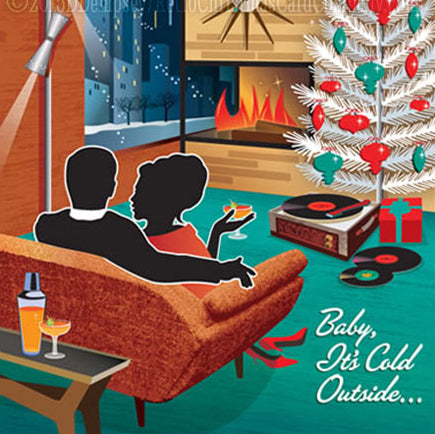
Retro Christmas Cards
Who here hasn’t sent their Christmas cards yet? Me! I haven’t even ordered them yet - oops! I’m still trying to decide which design to get, but I know for sure it’s going to be a retro-inspired one this year. That Midcentury vibe of bright colors, clean lines, classic cocktails and 60’s jazz really gets me into the Christmas spirit. If you’re in the same boat, check out The Retro Christmas Card Company. The great thing about them is that their original Christmas cards are all designed, illustrated and printed here in the USA. The only problem is that there are so many good ones that I just can’t decide! Here are a few of my favorite designs that I’m currently contemplating:





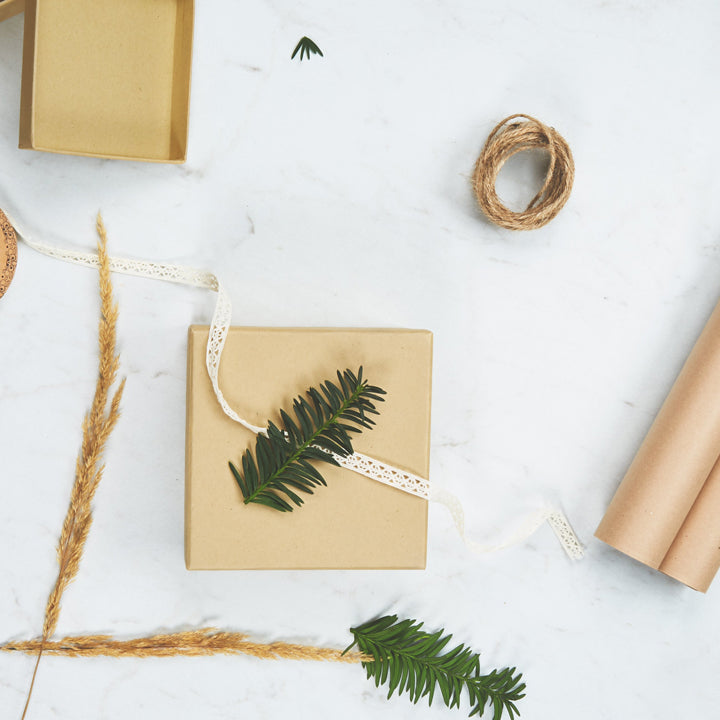
10 of Our Favorite Mid Mod-Inspired Christmas Gifts
Giving a gift for someone's home can be tricky. You really have to know the person and their style. Fortunately, it's easy to spot a Midcentury Modernist. Their home is a carefully curated collection of functional pieces with clean lines, warm woods, shiny metals, and pops of bright colors. If you have a Midcentury Modernist on your list, here are 10 of our favorite gifts to give (and receive!):
Making Midcentury Modern by Christopher Kennedy
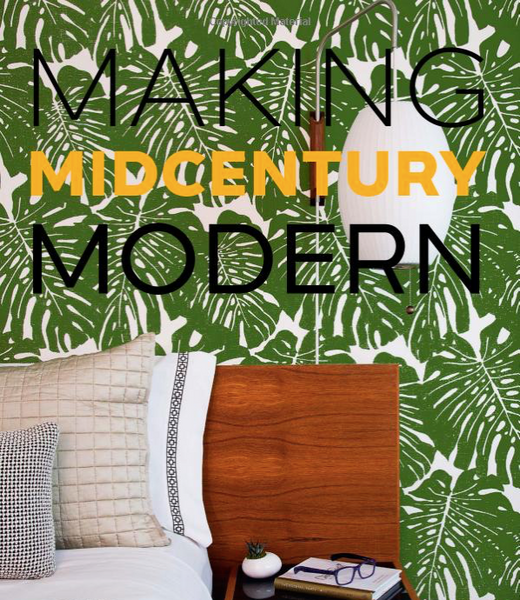
I love giving an receiving books as gifts - especially beautiful books that inspire me to change things up a bit and try new things. Making Midcentury Modern is a gorgeous book filled with beautifully styled Midcentury inspiration. It’s perfect for the Midcentury fan who doesn’t exactly live in their Midcentury dream home yet, but who loves to add some Midcentury style to their home anyway. The ideas in the book are fresh with a thoroughly modern take on Midcentury's design principles.
Travel Posters by Charley Harper for the National Park Service

A great graphic print with bright colors and geometric shapes add a midcentury twist to a gallery wall or stand-alone as a statement piece. These travel posters for the National Park Service by the famed illustrator Charley Harper are geometric, bright, and incredibly detailed. These posters are the last of the original stock, so they will sell out!
Coasters by Ciseal
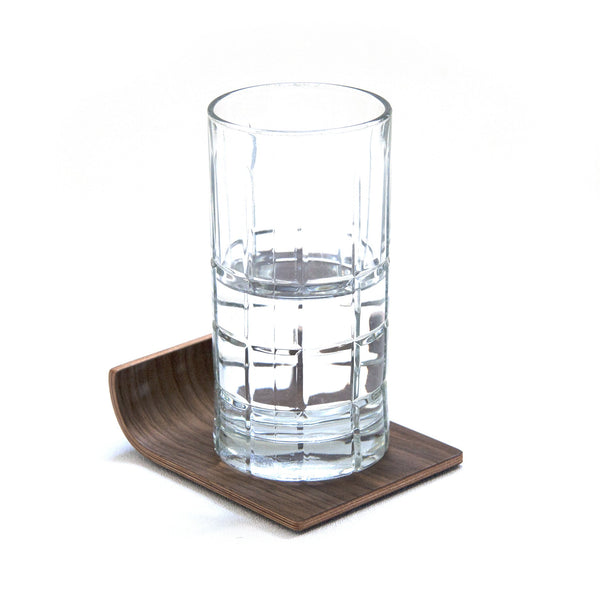
If your Midcentury modern giftee takes good care of their well-curated furniture, they’re going to want some classy coasters to protect their fantastic furniture finds. This set of four coasters adds a classic Mod bent plywood flair to any room - Midcentury or not.
Wake Mug by Samantha Nichols
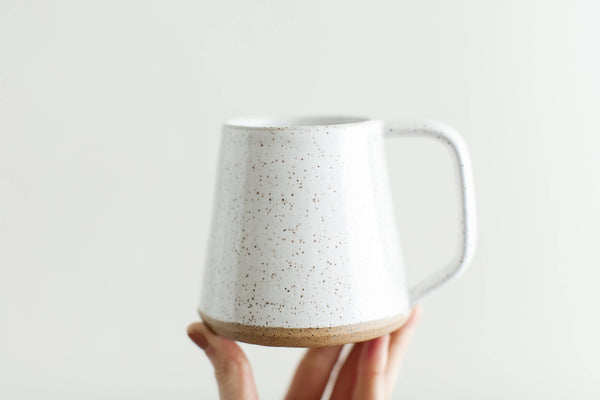
Who doesn’t look forward to a deliberately slow morning? Slowly sipping on coffee or tea, reading a much loved book, snuggling with the dog…there’s nothing better. Mid-Century style is keen on intentional, simple, beautifully restrained home goods, and this mug exhibits those qualities perfectly. It’s the one they’re going to reach for on those easy Sunday mornings.
Starburst Clock by George Nelson for Vitra
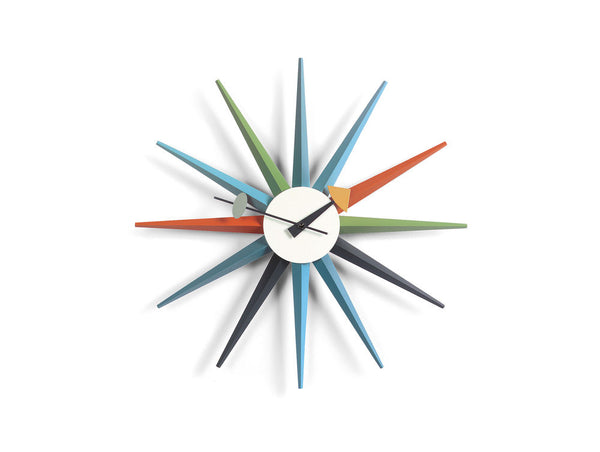
George Nelson’s famous starburst clock designs are a welcome addition to any Mid Century space. Not only are they practical, but the bright colors, earthy wood tones, shiny metals, and geometric shapes add that fun Midcentury vibe to any room.
Pineapple Cocktail Shaker by W+P Design
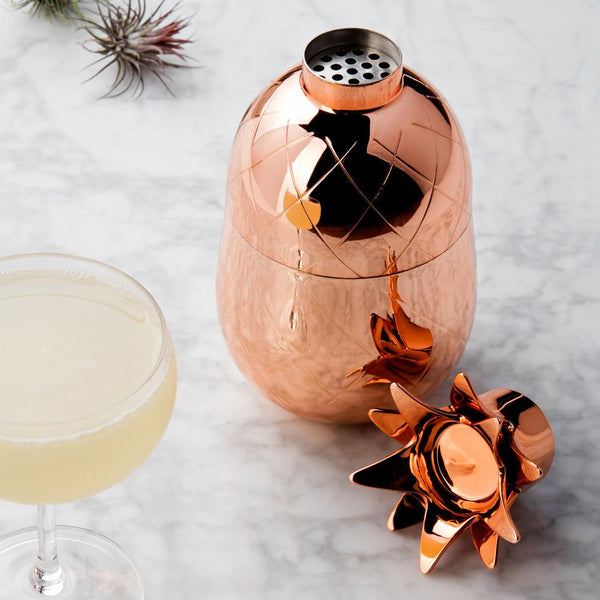
Midcentury style and cocktails are a match made in heaven. The Mod bar isn’t complete until it has a signature cocktail shaker, and this pineapple shaker by W+P Design is where it’s at. It’s a smart and stylish addition to the home bartender’s tool kit.
Graphic Print Throw Pillows by Alexander Girard for Vitra

Midcentury style thrives on a mix of patterns and textures. Add that comfortable, chic, and eclectic vibe with one or more of these pillows with Alexander Girard’s bright and graphic designs.
Quilt by Haptic Lab
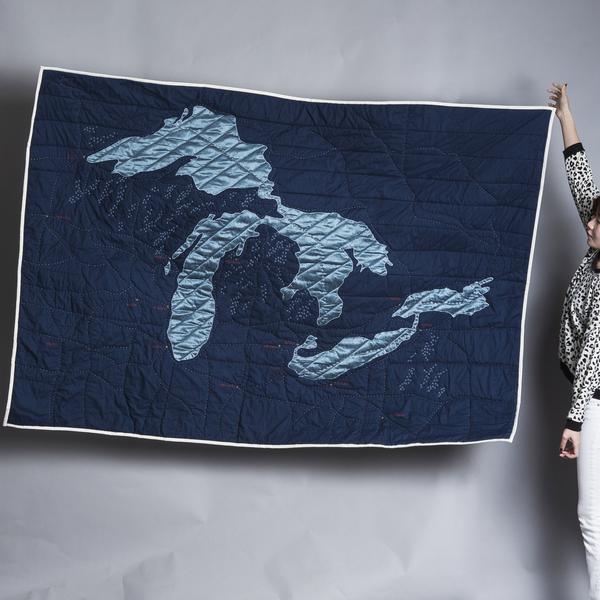
Winter nights require a cozy bright throw to warm up with a snuggle. This throw by Haptic Lab is the perfect gift for those Great Lakes Midcentury Modern fans.
Traverse Table Lamp by Ciseal
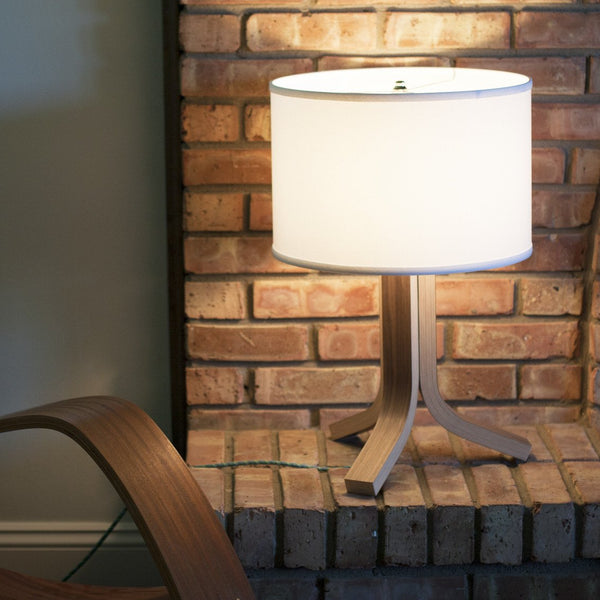
Brighten their decor with a mid-century style table lamp. This distinctly Midcentury tripod table lamp adds an extra glow to any corner of the home.
The Runwell Turntable by Shinola
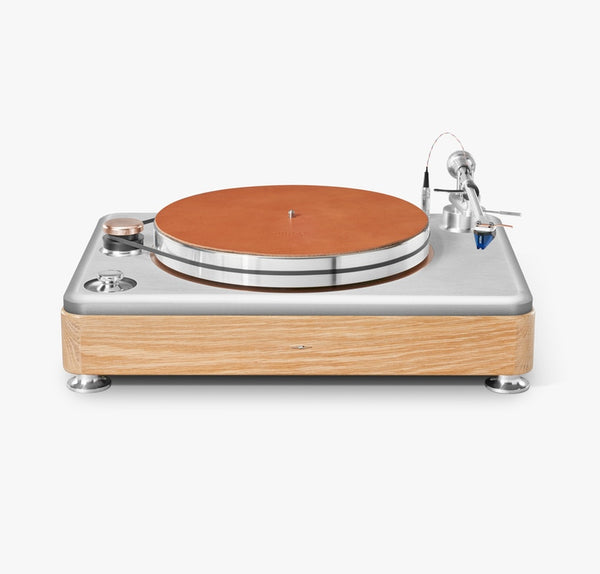
You can’t get much more Midcentury than an evening listening to records. This modern turntable by Shinola adds a bit of sleek style with the classic combo of wood and metal. Add a couple of favorite albums and you have everything needed to create a cozy, relaxing evening.

Made in Michigan: 10 Designers & Makers for Hand Crafted Gifts
In case you missed it, mass-produced, ubiquitous gifts are completely passé nowadays. Hand crafted, small-batch, sustainable and reclaimed are the new ideals. So, steer away from the superstore aisles or gift card kiosks and give an intentional and memorable gift that’ll be treasured for years to come. This gift guide isn’t simply a checklist of things to click on and buy - it’s an invitation to get to know the people who passionately make their products by hand. Put some wonder and whimsy back into the holiday season with these 10 shops who hand craft their beautiful goods right here in Michigan.
McClary Bros.
Drinking Vinegars, more commonly referred to as "Shrubs," are a Colonial-era drink mixer that are seeing a resurgence. McClary Bros. vinegars are hand-crafted in small- and micro-batches to showcase the fresh flavors of the season. The result is a refreshing, exciting mixer that’s perfect in a cocktail or shrub soda. Their Detroit Fig Leaf, Michigan Beet & Carrot, and Michigan Saskatoon are Ciseal’s favorites.
Electric Pink Crafts
We partnered with Julia of Electric Pink Crafts at the Renegade Craft Show in Detroit this year, and could not have been more impressed. Electric Pink creates pillows, rugs, blankets, and table runners in deeply hued, vibrant colors and patterns. Check them out if you’re looking for a unique, expertly hand crafted textile.
Detroit Denim
Detroit Denim jeans are like no other. They use US-sourced selvedge denim to create jeans that are of impeccable quality. Each pair is made entirely by hand out of the finest quality components. Their shop also includes aprons, totes, and belts, so you’re sure to find the perfect gift.
Mutual Adoration
All of Mutual Adoration’s goods are handmade using reclaimed wood from Detroit. Their picture frames, mirrors, trays and coasters all contain a bit of Detroit history. They’re the perfect gift for the discerning Detroiter on your list.
Abigail Murray Studio
Abigail Murray creates simple, utilitarian forms with complex surfaces of found and created textures. She explores ideas of pattern, layering and light referencing the repetition and precision of technology while delighting in the subtle imperfections of the entirely handmade. Her clean and modern bowls, cups, and vases will no doubt become those special pieces that put a smile on your face every time you use them.
Smithshop
Smithshop is known for it’s functional and ornamental metalwork—from fine goldsmithing to architectural ironwork. Everything they make is handmade in Detroit by a team of internationally recognized metalsmiths. Their shop includes everything from gorgeous bottle openers to elegant jewelry and supremely useful spatulas.
Woodward Throwbacks
Woodward Throwbacks creates all of their products out of materials that are gathered from illegal dumping sites around the city of Detroit. They keep the materials as organic as possible by simply sanding the splinters and keeping its natural form. The beauty is in the imperfection. Ciseal’s tip: the dogs in your life will adore their dog bowls!
Made Floral
Made Floral’s flower arrangements are spellbindingly gorgeous. There’s both variety and restraint in each bouquet which makes you just want to stare at them into infinity. Each of Martha's arrangements are hand crafted and natural, with the full intention of someone or something special.
LeadHead Glass
LeadHead Glass specializes in handcrafted terrariums made from reclaimed glass from deconstructed homes in Detroit. Their terrariums are modeled after 19th Century Wardien Cases which were originally used to transport exotic plants around the world. They’re the perfect environment to raise a mini garden in.
Ciseal
At Ciseal, each one of our products starts out as thin, flexible pieces of wood. After applying glue to each of these layers, we press them to shape in a mold. What comes out of the molds are modern, clean-lined products with the inherent warmth of wood. Our shop includes home decor and desk top products, table lamps and furniture that’ll add a little mid century modern vibe to your life.

9 Gifts for the Modernist Host(ess)
Can you smell that? It’s the delicious aroma of bread pudding, mulled wine, and chestnuts roasting over an open fire. All of that wonderfulness only means one thing - the holidays are approaching! Aren’t you excited for all of the Thanksgiving and Christmas parties on your calendar? I for one am looking forward to all of the delicious food and drinks and the festively decorated homes. Part of the fun for me when getting ready for the holiday season is hunting for the perfect host or hostess gifts. The least I can do is arrive at a party with a delightful gift in tow that says “thank you very much!” long after the dishes are clean and the party winds down. It’s easy to assume that a modern design fan with a clutter-free home wouldn’t want more things, but these nine gifts are sure to delight all but the most stringent minimalist.
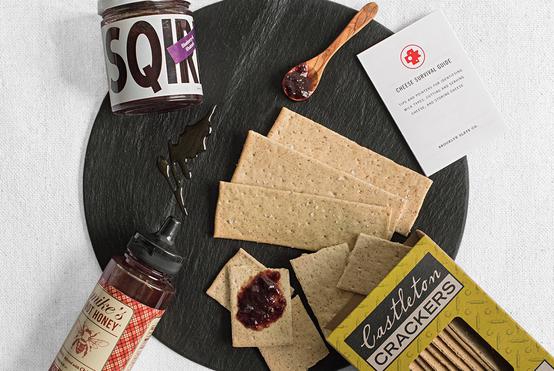
Just Add Cheese Set by Brooklyn Slate
Your dinner party host(ess) is going to love these cheese accoutrements. The set includes a fabulous slate cheese board, crackers, jam, honey, and Brooklyn Slate’s Cheese Survival Guide with all of their best tips on tasting, serving, and storing cheese. All they have to do is add their favorite cheeses and they’re good to go!

Host by W&P Design
There are so many great ideas in Host that your favorite host(ess) won’t be able to wait to invite you over again. The book includes both food and drink recipes that are unique yet approachable, and the advice for creating memorable get togethers is spot on.

Ray iPad Stand by Ciseal
Make sure your favorite home cook has the perfect view of their recipe by giving them a Ray iPad stand. This clean and modern form-follows-function stand holds an iPad or cookbook at just the right angle so no ingredient or step is missed.
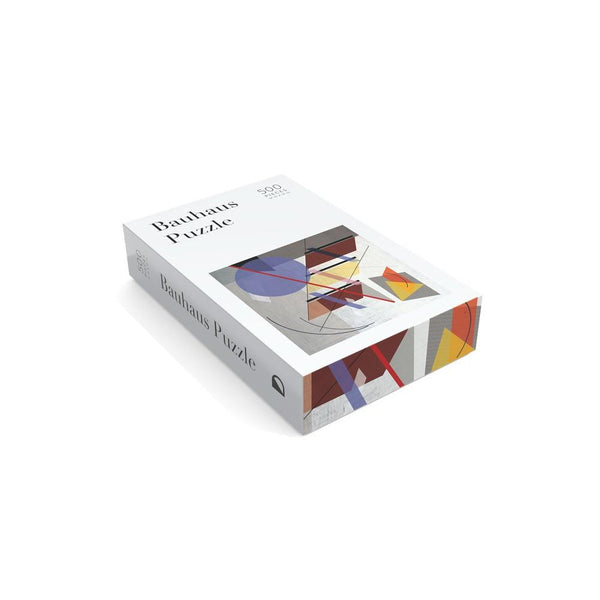
Bauhaus 500 Piece Puzzle by Dovetail
The Bauhaus was the most influential modernist art school of the 20th century and this puzzle will make any modernist-loving host or hostess’ eyes light up. After the stress of a dinner party, they’ll relish in the chance to unplug, relax, and put this puzzle together.
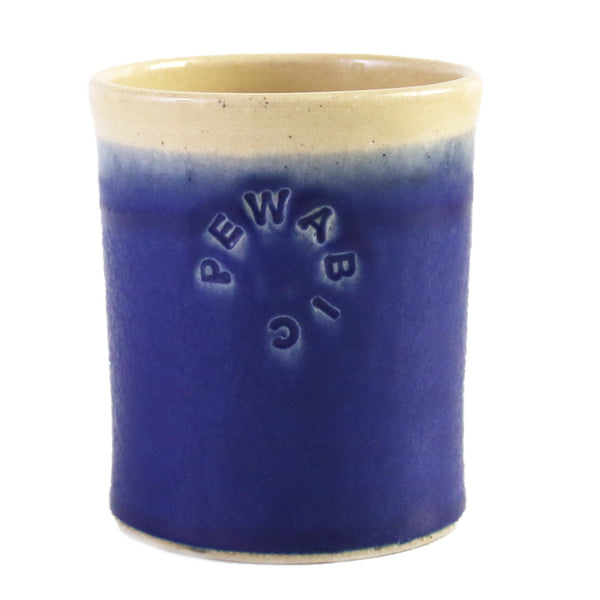
Rocks Cup by Pewabic Pottery
The handmade movement is going strong, and the hand wheel thrown Rocks Cup is sure to become a favorite for its one-of-a-kind charm. These cups are perfect for testing new cocktail recipes or tried-and-true favorites.
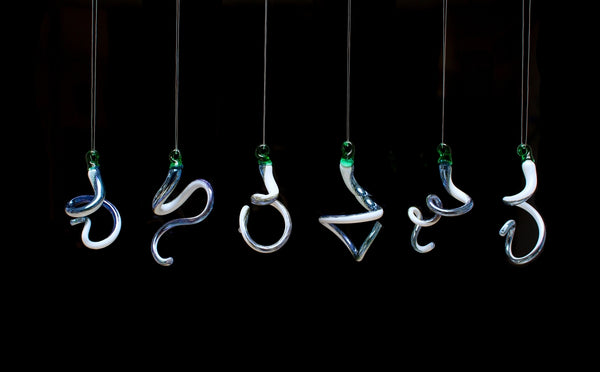
Curly Fry Ornament by Epiphany Glass
You can’t go wrong with Christmas ornaments - especially when they’re this gorgeous! The modern, whimsical shapes of these ornaments are completely unique because they’re made by hand.
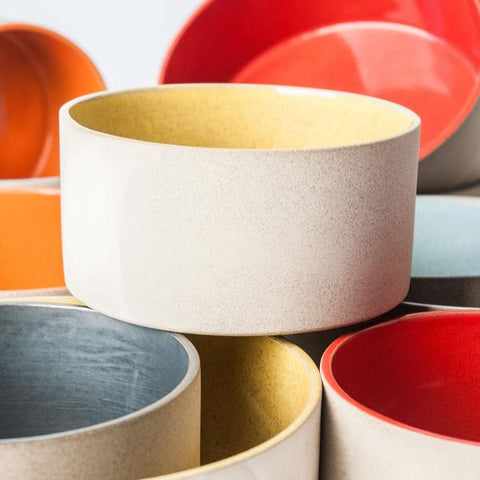
Utilita Bowls by J Schatz
These straight-sided bowls are simple in form, but that pop of color on the inside makes them a modernist’s go-to for everything. They are great for literally everything in the kitchen - prep work, baking, Cookie Crisp indulgences, etc.
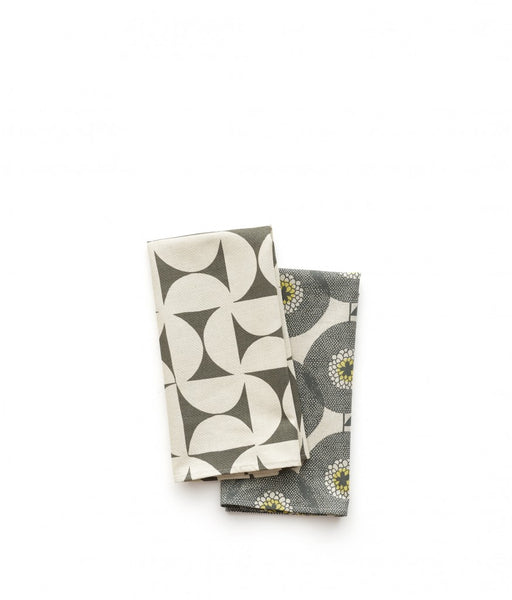
Skinny laMinx Tea Towels by Heath Ceramics
One can never have too many tea towels. They’re used for just about everything in the kitchen. These modern, eye catching patterns add a retro vibe that modernist hosts and hostesses love.
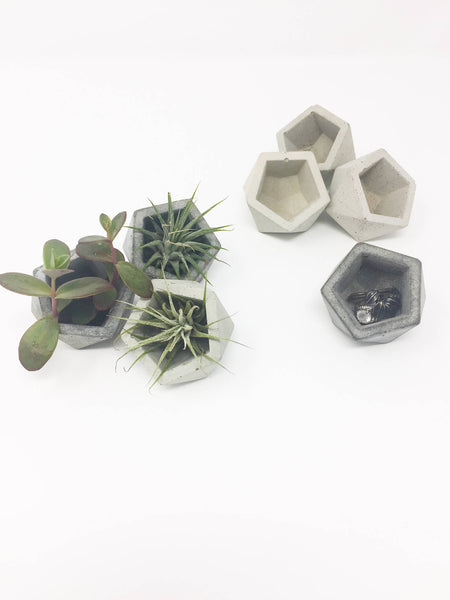
Geometric Concrete Planters by Mona Does Concrete
Plants add life to a room, and they’re especially appreciated in the cold winter months. These tabletop planters come in fun geometric shapes, and they are small enough to go anywhere.
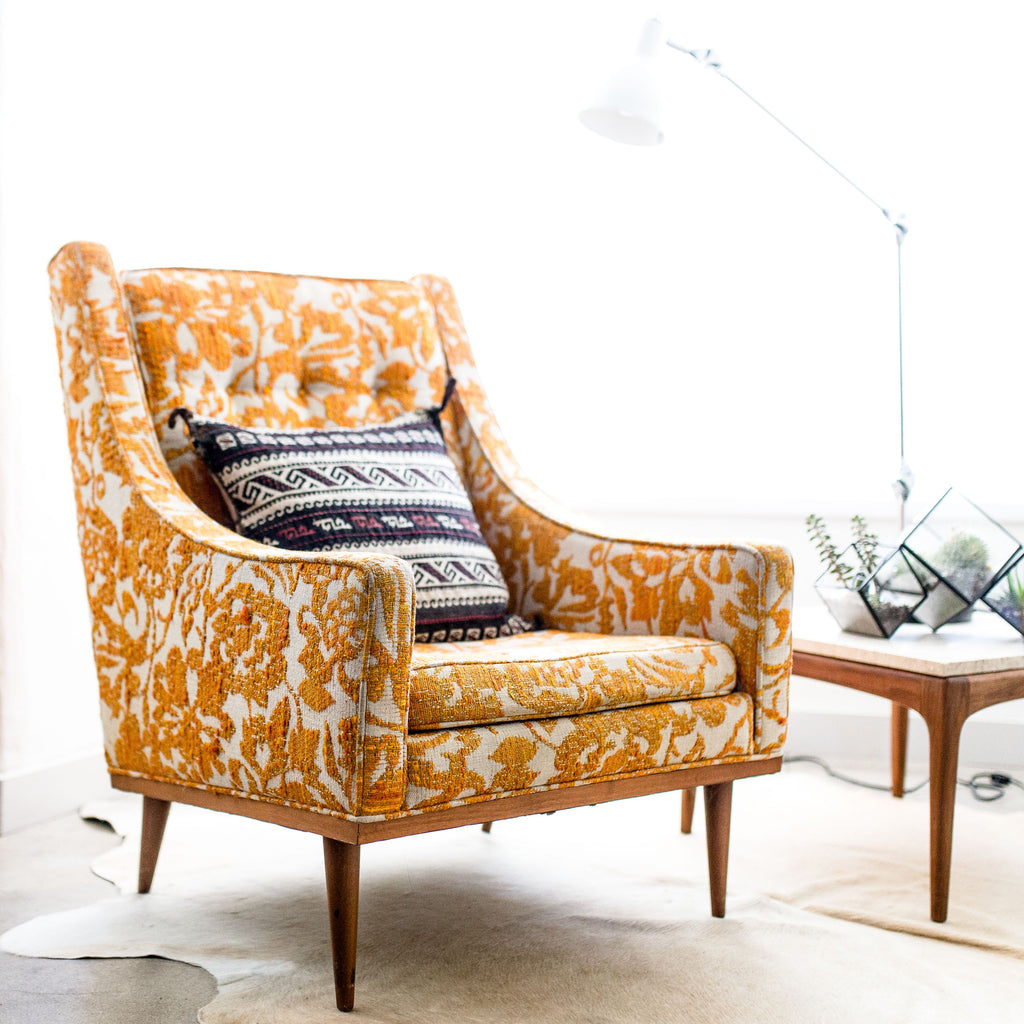
The Ciseal Guide to Buying Quality Handcrafted Furniture
You’re finally ready - that wobbly Ikea couch and those sturdy but mismatched Craigslist dining chairs have served you well, but it’s about time for a few upgrades. This time you’ve saved your dough, and you can’t wait to invest in some amazing handcrafted furniture that will last. One problem remains - while you’ve done your research and know the difference between Mid Century and Art Deco, you have no clue how to look at a piece and know if it will last five years or 50. Here at Ciseal, we make furniture and home decor that we certainly believe will last a lifetime, and these are the things we look for when purchasing new or vintage furniture of our own.
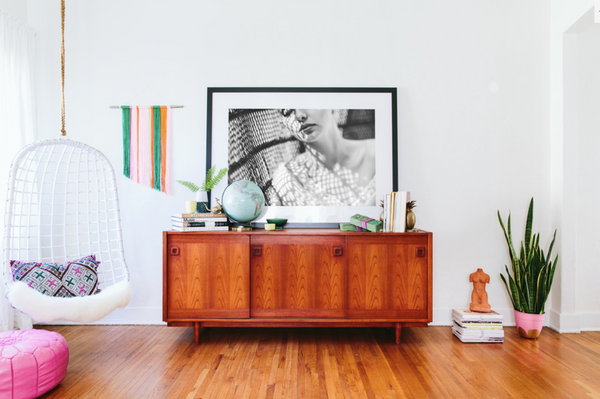
Photo: Taylor + Taylor
Judge It By Its Cover (Wood Furniture)
The first thing you see on a piece of furniture is it’s outer surface, so lets start there. A gorgeous piece of furniture won’t stay that way if it scratches easily, so we’re looking for hardwoods on all exposed surfaces that will be prone to wear. So, the top surface of a desk or console and any drawer fronts should be a wood that doesn’t scratch easily. Oak, teak, walnut, cherry, maple, mahogany, and birch are all great choices here. If you’re not sure, try to press your fingernail into an inconspicuous spot. If it leaves a dent, then it’s reasonable to assume it won’t keep it’s pristine looks for long.
Many assume that veneer (a thin layer of premium wood that’s applied to the outside of a piece) is a sign of low quality, but that’s not always the case. Veneer is often used in very high-end furniture. What you want to look for in a veneered piece is that the veneer is applied cleanly with no bubbles below the surface or lifting corners. And while veneered pieces can only be sanded and refinished so many times before the veneer is sanded away, it really is a simple process to re-veneer a much-loved piece if it’s solidly constructed.
Whether it’s solid wood or veneered, the structure underneath should be a solid wood or sturdy plywood. If its plywood, look for lots of layers. For example, a 3/4 inch thick plywood should have 10 or more layers of a solid hardwood like birch. You definitely want to avoid any piece that has fiberboard, particleboard, pressed wood, or oriented strand board (OSB) for it’s main structural pieces.
Is It Just a Pretty Face? (Wood Furniture Construction)
The biggest determining factor of a piece of furniture’s longevity is its joinery - how the pieces are held together. Dowels (wood rods threaded into opposing holes on adjacent pieces), dovetails (interlocking teeth at corners), mortise-and-tenon (a tapered end of one piece inserted into a hole in an adjacent piece) and screws make for solid furniture that will last. If you lift the piece at one corner it shouldn’t twist or warp. Remember to check that all the legs touch the floor so it won’t wobble or rock.
For furniture pieces with drawers, test each one to make sure it glides smoothly and has stops to prevent it from accidentally pulling all the way out. The drawer bottoms will usually be thinner material, but make sure they’re solid enough to not sag under weight. For doors, does it feel solid when you open them or do they sag a bit? Are the hinges quiet? If the piece has sliding doors, make sure the doors easily glide across their full range of motion.
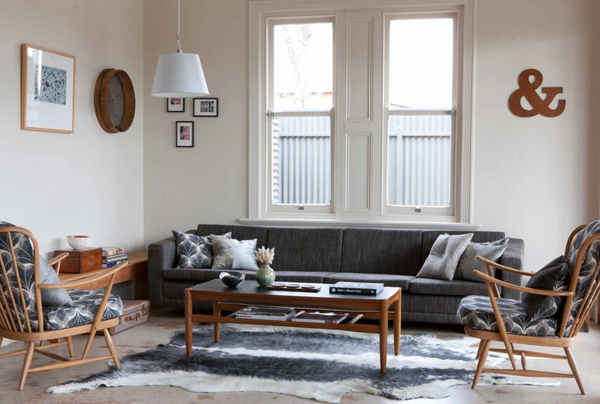
Photo: One Small Room
The Softer Side (Upholstered Furniture)
A sofa or chair might be comfy in the showroom, but how can you tell if it will stay soft and supportive after years of Netflix binges? If it has removable cushions you’re in luck. Un-zip the cover and take a look inside. If a seat cushion is just foam inside, walk away. A quality, long-lasting cushion will have a block of foam at its core, a layer of cotton, Dacron (a polyester fiber), or down wrapped around the foam, and a muslin cover surrounding it all. The foam on the seat cushions should have a density rating of 1.8 pounds or higher to ensure long lasting support.
Back cushions can be foam blocks (referred to as tight backs) or loose fill (shredded foam, Dacron, down, or other materials). For loose fill, look for cushions that have baffles or compartments that keep the fill from settling at the bottom. Either foam or loose fill can be plenty durable and it’s up to what you find most comfortable.
If you have pets, kids or rowdy friends, you’ll want to know how to clean the upholstery when the need arises. Can you throw the cushion covers in your washer and dryer and get them back on the couch right away? Do they have to be dry cleaned, spot cleaned, or are they vacuum only? And are the cushions reversible? If they are you’ll get a lot more life out of them.
Good Bones (Upholstered Furniture Construction)
Springs are the thing with upholstered furniture. There are lots of different styles (coil, cone, grid, sinuous, etc.), but it’s really up to your personal preference. They can all feel comfortable and last a long time, so test out the couches you’re considering and see if you’re a fan. Be sure to sit in different spots and positions and really sink in to make sure you’ll be comfortable on the edge when your dog claims the corner seat.
To test the rest of the structure, lift the couch or chair at one corner and make sure it doesn’t twist - just like we did with wood furniture. Then squeeze the arms and back to see how well the frame is cushioned.
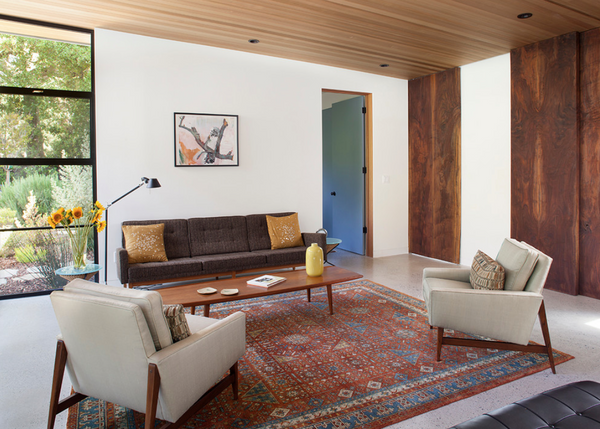
Photo: Mediterraneo Design Build, Inc.
There are certainly a lot of things to consider when buying furniture - especially if you’re looking for quality pieces that will last you a long time. Hopefully this little guide helps you find furniture you love that lasts a lifetime!
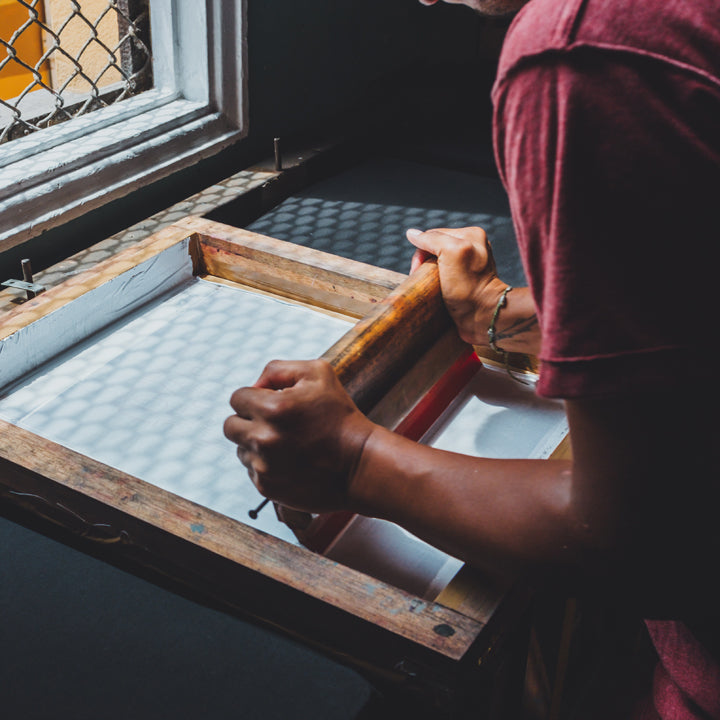
Why Handmade?
Here’s a sassy question to ask a furniture maker: Why even bother with making things by hand when it’s faster and cheaper to mass produce what you make in foreign factories?
.
.
.
After said maker carefully removes your foot from your mouth for you (don’t worry - they’ve been solving problems with their hands for quite a while), he or she will likely take a second to gather their thoughts and explain:
I get it - we’re a society of instant gratification. Most of the people reading this can get just about anything we could possibly want on-demand - movies, clothes, groceries, coffee, furniture - you name it. Is there anything you will ever need that you can’t purchase either in a store that's less than a 30 minute drive from home or online with free one- or two-day shipping?
Our culture is entitled to convenience, and we’re blissfully unaware of what that convenience is costing ourselves and our planet. We no longer appreciate the things that are thoughtfully and carefully created over time, we have lost the value of hard work, and we’re exhausting our planet’s natural resources to keep up with our demand to have more things immediately. It won’t be long before our factories can produce more goods than our planet has resources for. The mindless consumption of goods and the endless cycle of buying and throwing away will have to stop at some point. Will it be a conscious decision or something we’re forced to do when our planet can no longer supply our demand?
Fortunately, there is an alternative model that can both improve our lives and heal the planet. It’s a human-centered model - not in a selfish sense, but more focused on creating for each other, helping each other, and sharing with each other. Watching out for our fellow humans becomes more important than our own immediate gratification. The focus is on only creating what is loved and needed rather than things that we’re told we want. This model is embodied in the hand makers of the world who create intentional, sustainable, and lasting products.
How exactly do handmade goods benefit your life? Here are 3 ways:
-
Handmade is the creative expression of love. Each handmade product is carefully conceived and created by the maker. Making a product by hand is a labor of love. Often, these products are commissioned as gifts of love, and hopefully the receiver of the gift falls in love with the item and the love continues. Love is present at every point along a handmade product’s lifetime. When you feel the world needs a bit more love, how about sharing the gift of handmade?
-
Handmade brings us together. Think about who your dollar benefits when you buy yet another quickly and cheaply mass produced product off the shelf. Is it a CEO, a board of directors, or a bunch of shareholders? When you buy handmade, your dollars support an artist, their dreams, and their family. Each purchase you make has a direct impact on a person’s livelihood. That support creates a connection between you and the maker that lasts, and it’s a connection you would never experience when purchasing a mass produced product. No one could survive this world without the support of others, and buying handmade reminds us of that fact.
-
Handmade is alchemy. The creation of something that didn’t exist before is a kind of magic. What’s amazing about creativity is that each creation leads to another and another like a viral outbreak that creates an even bigger impact. Every handmade product has creativity at it’s core. With their daily creations, makers can spark ideas and discoveries that might even change the world. When people make their own products the world is more connected through creative, inspiring alchemy.
Handmade is without a doubt still relevant today in spite of mass production and delivery on demand. It expresses love, brings us together, and leads to new creations like no other form of production. Although it does not make sense to hand make everything, more and more are embracing the shift from on-demand consumption. The makers of the world and their biggest fans are leading us towards a more conscious, loving, sustainable, and intentional existence.
What other ways do you see handmade making this world a better place? Let me know in the comments below.
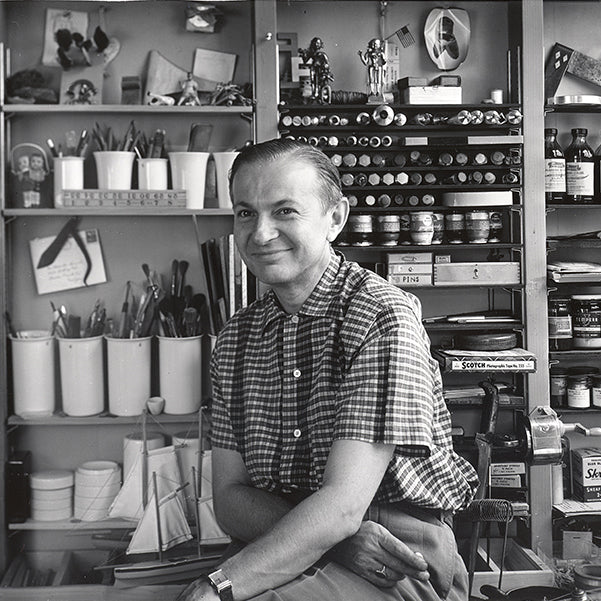
Inspiration Friday: Alexander Girard
Through his work across the fields of architecture, interior design, textiles, and graphic design, Alexander Girard became one of the most influential designers of the twentieth century. Even today, Girard’s work with color, texture, decoration, and handmade details are regarded as touchstones of classic modernism. He is widely regarded as the greatest colorist and textile designer of the mid century era.
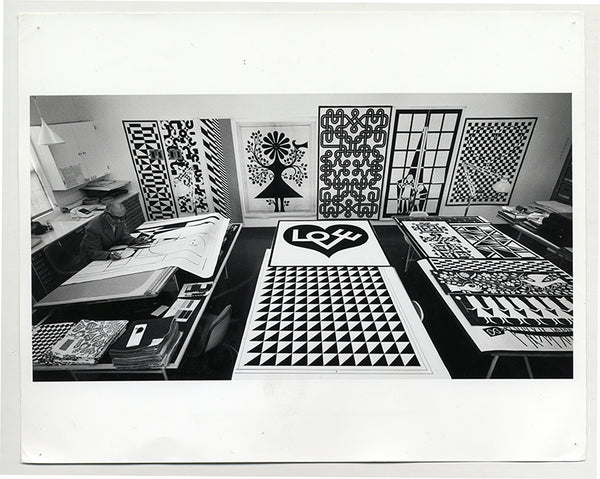
Alexander Girard was born in 1907 in New York City and raised in Florence, Italy where he was immersed in the art and design culture. After training at the Royal Institute of British Architects in London and the Royal School of Architecture in Rome, he moved to New York City in 1932. It was in New York that he began his career as a designer. He moved to Michigan in 1937 where he established a design office and retail space in Grosse Pointe. Even though he moved to New Mexico in 1953, Girard kept his Michigan ties strong by heading the textile and fabric division of Herman Miller, headquartered in Zeeland, Michigan.

His collaborations with designers and architects such as Charles and Ray Eames, Eero Saarinen, and George Nelson, among others influenced a wide range of art and design fields including furniture, textiles, graphics, architecture, and sculpture. For instance, his For Modern Living exhibit at the Detroit Institute of Arts in 1949 included the first public display of Charles and Ray Eames’ molded plywood chairs. His collaborations helped to popularize mid century modern design and make it a sought-after style.
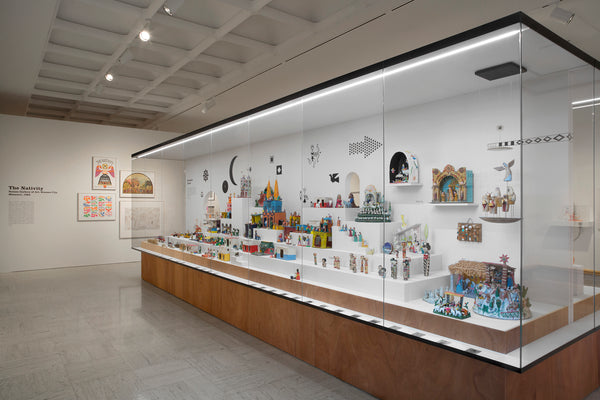
His most influential work was probably when he served as director of design for Herman Miller’s textile division. During his 20 years there, Girard created more than 300 fabric and wallpaper designs. Many of these vibrant designs were inspired by his international travels and expansive folk art collection. Girard’s vibrantly-colored and folk-art-inspired textiles helped to energize the furniture designed by his Herman Miller colleagues. He was the first designer to see textiles as more than just functional. He saw that the color and pattern of the textile could emphasize the clean forms of mid century design.
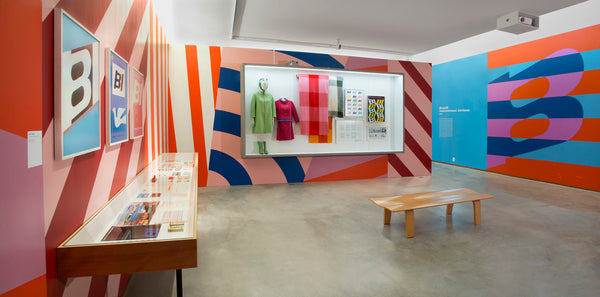
While Girard died in 1993, we continue to be inspired by his vibrant work. If you’re interested in seeing his comprehensive work, you’re in luck! The Vitra Design Museum in Weil am Rhein, Germany is in possession of Girard’s personal estate which includes many drawings, sketches, photographs, textiles, folk art objects, and furnishings. Pieces from the Vitra collection as well as items from Girard's folk art collection on loan from the Folk Art Museum in Santa Fe are featured in the Vitra Design Museum’s exhibition, “Alexander Girard. A Designer’s Universe,” and it’s currently on tour. Learn more about the exhibition including upcoming tour dates and locations here.
All photos: Cranbrook Art Museum

Is “Handmade” Just a Marketing Gimmick?
Interest in handmade products is on the rise - and for good reason. The shift towards purchasing handmade products is a counterpoint to the impersonal mass production and mindless purchasing we’ve become accustomed to in the past 60 years. For many who are weary of the impact that large corporations have had, buying handmade is the socially, economically, and environmentally responsible thing to do. But in this day and age of accessible technology, many consumers are not sure they can trust the “handmade” label. Handmade is a big marketing angle in our industry, and we wanted to take a second to discuss where we stand.
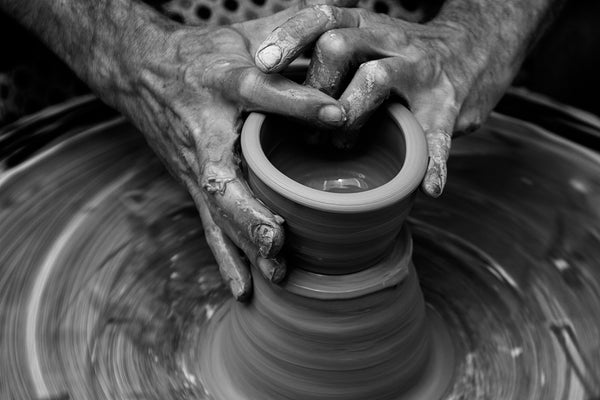
When you can find thousands of identical “handmade” pieces of furniture at big box stores it’s easy to give a cynical side eye at the mention of “handmade.” As soon as a product is labeled “handmade,” a massive gray area emerges in your mind. From doing everything exclusively by hand with hand-foraged materials and handmade tools to hand-finishing a bowl that was carved on a computer-guided lathe - there are many interpretations along the spectrum and it’s easy to see why “handmade” can be so confusing. It comes down to deciding for yourself where along the spectrum you’re most comfortable.
To discover where you stand, please feel free to ask questions like, whose hands made it, where it was made, out of what materials, with what methods, and was the maker respectfully compensated? Any maker of handmade products should be happy to answer all of these questions and more, and if they’re not, then that’s probably a good sign to move on. With your questions answered, you will be able to make more informed decisions that leave you feeling satisfied and proud of your purchase.

Photo by Alice Donovan Rouse on Unsplash
For me, I find it helpful to think of handmade as craft made, and when I think of craft made, I’m reminded of craft beer - all of those tiny breweries that have emerged in the past few years who produce delicious, flavorful, and unique beers. Craft breweries create their brews with passion and love, and that’s plain to taste in their mouth-watering products. They may not all be focused on creating their beer completely by hand like in centuries past because of volume demands or health and safety factors, but their craft remains their focus. It’s a responsibility to the ingredients, the process, the final product, and the customer - not just the executives and the shareholders - that set craft breweries apart from their larger corporate counterparts. That essence is what I look for in “handmade” products for my home. I want to know that the materials are sustainably and responsibly sourced, the methods used to make it will last, the design is something I won’t tire of, and the maker is adequately compensated so that they will be able to continue to make their lovely wares for years to come.
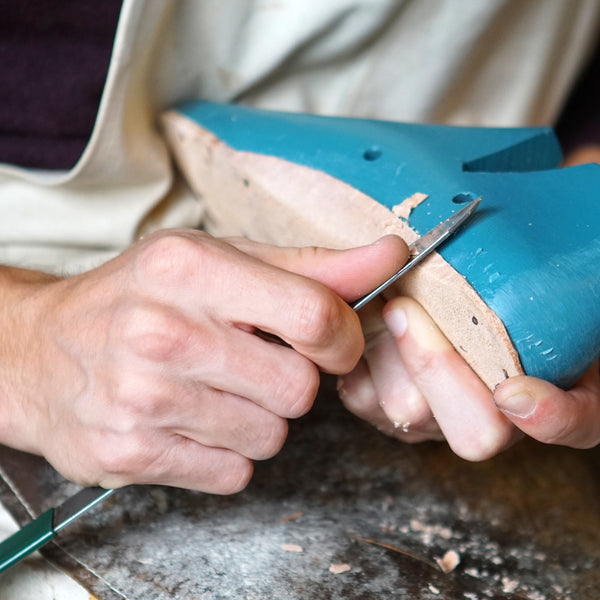
Photo by Raoul Ortega on Unsplash
Ciseal’s interpretation of handmade allows for the use of machinery and technology where it makes sense in improving the quality of the final product. We don’t hand-forage or reclaim wood from old barns because our craft doesn’t really work well with those methods. The veneers we use are sustainably sourced, and they are produced on computer-guided saws that maximize the use of the natural material. We hand-cut each layer of veneer to shape, then the glue is brushed on by hand. Our products are pressed to shape by using either manual clamps or a motorized vacuum press depending on the design’s requirements. We use hand-operated power tools like saws, sanders, and drills to prepare our products for their final hand-sanding. Then we apply a hand-rubbed finish to preserve and protect each piece. By the time it makes its way to you, each piece has had our hands all over it. Eventually, we will probably consider using industrial presses with machined dies to bend our plywood when our volume necessitates it, but much of our process will always remain very hands-on.
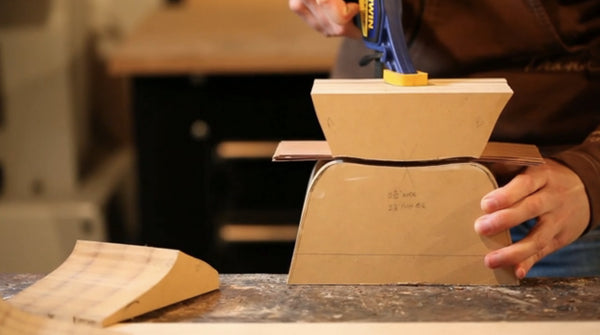
As a small business, it’s a challenge to balance design, production, and value to our customers all while making sure the business is producing a healthy profit that will ensure that it stays around. Someday, that balance may lead us to consider producing our products with a mass-manufacturing approach, and when that time comes we will weigh all of the costs and benefits. For now, we will stick to our almost completely hands-on process because we love what we do and how we do it and we believe it makes our products better for it. Thank you to everyone around the world who find value in our work the way it is, and thank you to those of you who want to see us grow into the biggest bent plywood manufacturer in the world. We’re humbled by your support.


